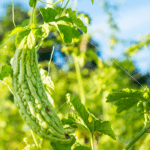An Introduction – From Monsoons to Harvests
Unleashing the Power of Cropping Seasons in India
Cropping seasons play a vital role in the agricultural landscape of India, guiding farmers in determining the optimal periods for planting and harvesting crops. With a deep understanding of cropping seasons, farmers can select suitable crops that align with regional climates and maximize yields. In this comprehensive guide, we delve into this concept, exploring the various types prevalent in India, highlight their benefits, offer guidance on selecting the right season for your farm, discuss common problems faced, and provide effective solutions. Join us on this journey to unlock the secrets of successful crop cultivation in India.
What are Cropping Seasons?
Cropping seasons refer to specific periods of the year during which crops are sown, nurtured, and harvested. These seasons are influenced by the climatic conditions and weather patterns prevalent in a particular region. Understanding cropping seasons empowers farmers to make informed decisions, choose appropriate crops, and avoid unfavorable weather conditions that could impact crop growth and productivity.
Types of Cropping Seasons in India
Rabi Season:
The Rabi season spans from October to March, coinciding with the winter months. This season is characterized by a moderate temperature range of 15-25 degrees Celsius, making it ideal for specific crops. Key crops grown during this season include wheat, barley, gram, and mustard. Farmers harness the cooler temperatures and sufficient soil moisture to cultivate these crops successfully.

Kharif Season:
The Kharif season takes place during the summer months, from June to September, when the average temperatures range between 25-40 degrees Celsius. This season aligns with the monsoon season, ensuring adequate rainfall for crop cultivation. Prominent crops grown during this period include rice, maize, jowar, bajra, and cotton. Farmers leverage the warm temperatures and abundant rainfall to optimize the growth and development of these crops.

Zaid Season:
The Zaid season occurs during the monsoon period, specifically from July to September. With average temperatures ranging from 25-35 degrees Celsius, this season allows farmers to cultivate vegetables, fruits, and pulses. The monsoon rains provide essential moisture for crop growth, and farmers harness this period to maximize the yield of these perishable crops.

Benefits of Cropping Seasons
Understanding and aligning with cropping seasons in India offer numerous advantages for farmers, including:
Increased Crop Yields:
Cropping seasons provide favorable climates for specific crops, facilitating optimal growth conditions. By choosing the appropriate season, farmers can enhance crop yields and achieve greater agricultural productivity.
Risk Mitigation:
Cropping seasons help minimize the risk of crop failure by aligning planting and harvesting activities with the most suitable weather conditions. This strategic approach reduces the impact of unfavourable climate events and contributes to more stable agricultural outcomes.
Soil Quality Improvement:
Implementing cropping seasons involves crop rotation and periods of fallow land, which contribute to improved soil health. Crop rotation replenishes soil nutrients, minimizes the risk of diseases and pests, and promotes sustainable farming practices.
Biodiversity Enhancement:
Cropping seasons encourage the cultivation of a diverse range of crops, promoting biodiversity within agricultural systems. This diversity helps maintain ecological balance, supports pollinators and beneficial organisms, and contributes to the overall health of the farming ecosystem.
How to Choose the Right Cropping Season for Your Farm
Selecting the most suitable cropping season for your farm requires consideration of several factors:
Climate and Weather Patterns:
Evaluate the climatic conditions and weather patterns specific to your region. Consider temperature ranges, rainfall patterns, and the duration of each season to determine the best fit for your desired crops.
Crop Selection:
Identify the crops that align with the climate and weather conditions of each cropping season. Conduct thorough research to understand the crop requirements, such as temperature tolerance, water needs, and sunlight preferences. This knowledge will guide you in choosing crops that thrive during specific cropping seasons.
Land Availability:
Assess the availability and suitability of your land for different cropping seasons. Consider factors such as soil type, drainage capacity, and irrigation infrastructure. Certain crops may have specific land requirements, and understanding your land’s capabilities will help determine the most appropriate cropping season.
Labour Resources:
Evaluate the availability of labour resources during different seasons. Some cropping seasons may require intensive labour, such as planting and harvesting, while others may require less manual intervention. Consider the labour availability and plan accordingly to ensure efficient farm operations.
Input Costs:
Analyse the cost implications associated with different cropping seasons. Some seasons may require additional inputs such as fertilizers, pesticides, or irrigation, which can impact overall production costs. Assess the financial feasibility of each season and choose the one that aligns with your budget.
By carefully considering these factors, you can make an informed decision and choose the right cropping season that optimizes crop growth and maximizes your farm’s profitability.
Common Problems with Cropping Seasons
While cropping seasons offer significant benefits, several challenges can arise. Understanding and addressing these common problems will contribute to successful crop cultivation:
Pests and Diseases:
Crops are susceptible to various pests and diseases, especially during the early stages of growth. Integrated pest management techniques, such as using biopesticides, implementing crop rotation, and practicing proper sanitation, can help mitigate these issues effectively.
Weed Infestation:
Weeds compete with crops for essential resources like water, nutrients, and sunlight. Employing weed management strategies, such as regular weeding, mulching, and herbicide application, will help control weed growth and prevent yield losses.
Drought:
Inadequate rainfall and water scarcity can severely impact crop growth, especially during the summer season. Implementing efficient irrigation systems, such as drip irrigation or sprinklers, and practicing water conservation methods can mitigate the effects of drought and ensure optimal crop development.
Floods:
Excessive rainfall or unexpected flooding during the monsoon season can cause significant damage to crops. Implementing proper drainage systems, constructing bunds or raised beds, and choosing flood-tolerant crop varieties can help minimize the impact of floods on your farm.
How to Solve Common Problems with Cropping Seasons
Addressing common problems requires proactive measures and appropriate management techniques. Here are some effective solutions:
Integrated Pest Management:
Implement integrated pest management practices by combining cultural, biological, and chemical control methods. Regular monitoring, early pest detection, and targeted pesticide applications can help manage pest populations effectively while minimizing environmental impact.
Weed Management:
Adopt cultural and mechanical weed control techniques, such as hand weeding, mulching, and timely tillage practices. Additionally, utilizing herbicides selectively and according to recommended dosage can effectively control weed infestation.
Irrigation Management:
Efficient water management practices are crucial for drought mitigation. Monitor soil moisture levels regularly, apply irrigation as needed, and explore water-saving techniques like drip irrigation or precision irrigation systems.

Flood Mitigation:
Implement proper drainage systems to prevent waterlogging in fields. Constructing bunds or raised beds can help protect crops from excess water. Selecting flood-tolerant crop varieties that can withstand temporary waterlogging can also minimize flood-related damages.
Conclusion
Understanding and harnessing the power of cropping seasons is paramount for farmers in India. By aligning planting and harvesting activities with the specific climatic conditions of each season, farmers can optimize crop yields, reduce the risk of failure, improve soil quality, and enhance biodiversity on their farms. By considering factors like climate, crop selection, land availability, labor resources, and input costs, farmers can make informed decisions and choose the most suitable cropping season for their farms.
To tackle common problems associated with cropping seasons, farmers can adopt integrated pest management techniques, prioritize weed management practices, implement efficient irrigation systems, and take measures to mitigate the effects of floods. By employing these solutions, farmers can overcome challenges and ensure the success of their crop cultivation endeavours.
In conclusion, the knowledge and implementation of cropping seasons in India are instrumental in achieving agricultural prosperity. By understanding the different cropping seasons, farmers can make informed decisions regarding crop selection, optimize resource allocation, and mitigate risks associated with weather conditions. Additionally, addressing common problems such as pests, weeds, drought, and floods through proactive management approaches contributes to sustainable and productive farming practices.
Through careful consideration of climate and weather patterns, crop selection, land availability, labor resources, and input costs, farmers can choose the ideal cropping season that aligns with their farm’s requirements. By staying abreast of the latest research and agricultural practices, farmers can continuously improve their crop cultivation methods and maximize yields.
By sharing this comprehensive guide on cropping seasons in India, we aim to empower farmers with the knowledge and tools necessary to excel in their agricultural pursuits. Successful crop cultivation begins with a deep understanding of cropping seasons, and by harnessing this knowledge, farmers can achieve agricultural excellence, contribute to food security, and drive the growth of India’s agricultural sector.
Remember, each farming operation is unique, and factors such as regional variations, specific crop requirements, and local conditions may influence the choice of cropping season. Therefore, it is crucial to adapt the information provided in this guide to your specific farm circumstances and seek guidance from local agricultural experts and authorities.
By embracing the opportunities and challenges presented by cropping seasons, Indian farmers can pave the way for a sustainable, resilient, and prosperous future in agriculture. Let us embark on this journey together and unlock the full potential of cropping seasons for the betterment of our farms, communities, and nation.
Disclaimer:
The information provided in this guide is for educational purposes only and should not replace professional agricultural advice. Always consult with agricultural experts and local authorities for personalized guidance on cropping seasons and farm management practices.







